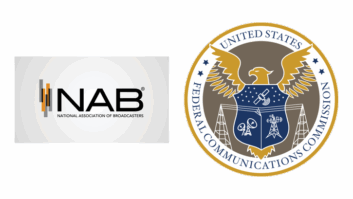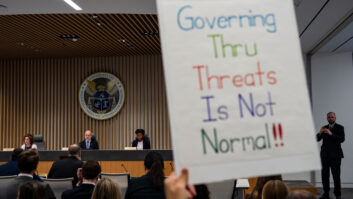Xperi and several U.S. broadcast groups are pushing back against an effort to modify the FCC’s order allowing asymmetric digital sidebands.
In September the commission allowed most FM stations to operate their upper and lower HD Radio sidebands at different power levels without special permission. The change was intended to give broadcasters greater flexibility to maximize their coverage. (For now, stations on 107.1 to 107.9 have to operate under the previous rules due to aviation industry concerns.)
In November, Press Communications petitioned the FCC to reconsider parts of that decision.
Press is a New Jersey-based owner of a half-dozen radio stations and a self-described skeptic about HD Radio’s commercial viability. The company has said that it supports asymmetric operation “only if the change fully protects Class A broadcasters.”
“The contention that this service will not introduce additional interference to adjacent channels is largely based on assumptions that the HD system universe is stable and reliable. The evidence we submit herein strongly suggests otherwise,” the company told the FCC. It said its engineering research suggests that “most HD operators fail to accurately monitor their HD authorized power levels, much less adhere to their authorizations.”
Concerned about interference, it wants the FCC to require that authorizations for HD operation be published in the commission’s Daily Digest. Also, HD Radio-enabled stations should be required to “file an analyzer plot showing compliance with their authorizations at least once a year,” and the plots would be accessible via the LMS database.
Press also asked the FCC to develop a plan for arguing interference that would be similar to its 45 dBu translator rules, “recognizing the need for stations, and their listeners, to educate, identify and report digital interference.” It said the FCC also should allow affected stations to demonstrate interference through out-of-compliance analyzer plots.
And it called on the commission to “address the obvious inequalities inherent in the current application of the HD rules for Class A broadcasters.” (Read the Press petition.)
Now Xperi, parent of the HD Radio technology, has asked the FCC to dismiss the petition.
“The Press Petition does not provide any basis for the commission to depart from that finding and is based on an interference study that is deeply flawed,” Xperi wrote.
“Press has not provided any valid justification for adding additional red tape to the process for commencing asymmetric sideband operations.” It said Press had not identified a single instance of real-world interference from the use of asymmetric sidebands. (Read the Xperi filing.)
Xperi is getting support from several big broadcast organizations.
iHeartMedia told the FCC that the objection from Press should have been filed sooner. It also took exception to the methodology used by the Press study. It said its own research taken at transmitter sites confirms — “within reasonable parameters” — that iHeart’s HD Radio operations in the Philadelphia area are compliant. It also said field measurement of local signals generally shows “side band symmetry within a reasonable range,” and that other factors in the environment are likely responsible for inconsistent field measurement data.
“Lastly, Press is asking the commission to make fundamental changes in the system of FM allotments by seeking to extend protections to Class A FM stations outside their protected service contours. Such a request is outside the parameters of this rulemaking,” iHeart wrote. (Read the iHeart filing.)
Oppositions to the Press petition also were filed by Educational Media Foundation and CMG Media Corp.
The latter told the FCC: “As the record in this docket shows, radio broadcasters have successfully operated in HD for more than two decades and those operations have proven stable. Accordingly, contrary to the claims Press makes in its petition, imposing additional regulatory requirements on HD Radio operators would be unnecessarily burdensome on broadcasters and would not serve the public interest.”






